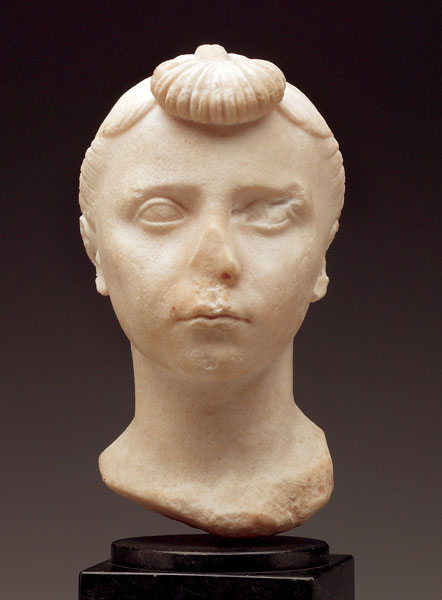

The young woman in this early first-century A.D. marble sculpture demonstrates her social class as well as her fashion sense by wearing a hair style made famous by Livia Drusilla (58 B.C.-29 A.D.), the wife of Caesar Augustus and first empress of the Roman Empire. Known as the nodus (knot, knob), the style involved a top-knot or roll above the forehead connected by a central braid to a bun at the back of the head.
Livia is said to have adopted the hairdo because it contrasted with the long tresses made famous by Cleopatra—who was defeated, along with her lover Marc Anthony, at the Battle of Actium in 31 B.C. by Livia’s husband, Augustus—and associated the relative austerity of the nodus with republican virtues. The nodus came to represent ideal Roman womanhood; it was a patriotic “do” that would long be favored by Roman matrons and those, like this girl, who aspired to become one.
The marble head is on display at the Yale University Art Gallery.
Already a library member? Log in here.
Institution user? Log in with your IP address.

